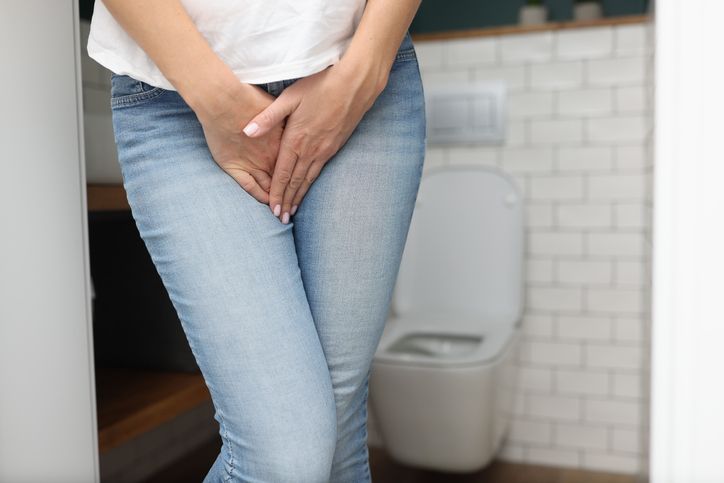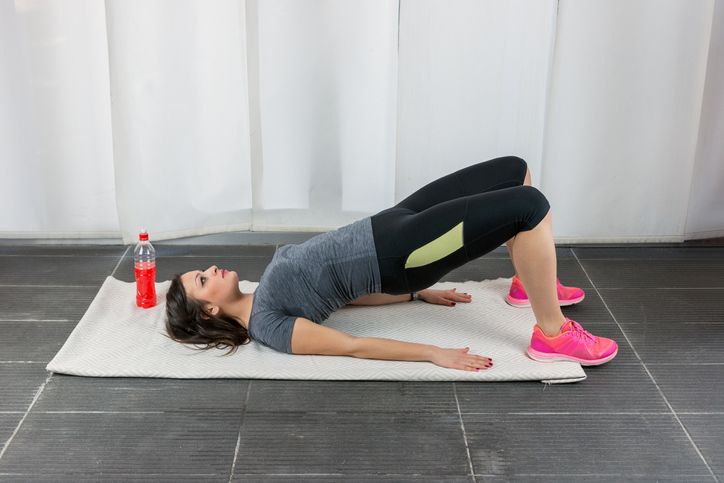- Home
- Trend
- Weight Loss Strategies
- Acne Tips
- Hair Health Information
- Blemish Removal Tips
- Acne Scar Removal Tips
- Muscle Building Techniques
- Intimate Care Tips
- Postpartum Intimate Care
- Eye Bags Wiki
- Tips for Face Slimming
- Secret of Permanent Hair Removal
- Breast Enlargement Tips
- Cure to Snoring
- Marionette Lines
- Skin-Tightening Secrets

免費體驗
Fotona Vaginal Tightening Machine
1 Minute Self-Registration
Date should not be before minimal date
Perhaps you have heard of the following whispered experiences: bladder leaks, frequent bathroom visits, painful sex, loose vaginal walls, and the horrifying sensations of organs sliding out of the body. Maybe you are even experiencing these scary symptoms yourself. Pelvic floor muscle condition is essential for maintaining feminine health. Statistics show one in 3 women have had weak pelvic floor muscle concerns, such as incontinence, frequent urination, unsatisfactory sex and pelvic organ prolapse. These symptoms of dysfunctions are not only inconvenient but also humiliating and frightening. Luckily, just like all other muscle groups, you can strengthen the pelvic floor muscles with workouts! Learn more about pelvic floor muscles, pelvic floor dysfunctions, and the 3 Kegel exercises you need to maintain a healthy pelvic area!
1
What are the pelvic floor muscles?

Think of your torso as a water bottle, and the pelvis as the bottom. Since the pelvis has a hole in the middle, what keeps all the organs from falling out?
The pelvic floor muscles consist of muscle layers that stack and connect with each other, forming a net-like muscle group and attaching its 4 corners to the pubic bone (front), the tailbone (back), and the sit bones (left and right).
Like a net, the female pelvic floor muscles support and hold up the pelvic organs (urethra, bladder, rectum, anus, cervix, uterus, and vagina).
You most certainly feel your pelvic area muscles at work when the bathroom is not available: your pelvic area muscles contract, lifting the pelvic area organs and consequently tightening the openings of your vagina, anus and urethra, effectively holding in urine and feces, as well as preventing you from passing gas in inappropriate situations.
In contrast, relaxing the pelvic area muscles dilates the openings, allowing bodily waste expulsion.
Pelvic floor muscles are also essential for sexual function. In particular, female pelvic floor contractions tighten the vaginal muscles, which brings pleasure to both partners during sex.
Last but not least, the pelvic area muscles help lift and support the fetus during pregnancy.
2
What are pelvic floor dysfunctions?

The pelvic floor muscles should be firm, thick, strong and elastic. However, it can slowly get saggy and loose, with weak pelvic muscle contractions, leading to a variety of pelvic floor dysfunctions.
Incontinence
Weak pelvic muscle contractions mean less bladder control, as well as controls over anus and urethra—the openings are unable to tighten.
As a result, actions such as coughing, laughing, and lifting heavy objects can put pressure to your abdomen, squeezing down on the bladder, anus and urethra, causing urine steam, stool and gas to leak out.
Frequent urination
Without strong pelvic muscles, the pelvic area organs pool together at the bottom of your torso. This is called pelvic organ prolapse (POP). This allows the bowels to also sag, putting their weight on the pelvic organ. In particular, the bowels can push down on the bladder which, alongside a loose urethra, means you will need to urinate very frequently—you may find yourself needing a bathroom break per hour to half an hour, or even less.
Impacts Sex Life
The weakened pelvic area muscles also fall to help to tighten the vaginal muscles for women, resulting in lessened sexual pleasure during intercourse. The lack of contractions during sex can also give the sensation of a "loose" vaginal cavity.
Pelvic organ prolapse (POP)
POP is when the pelvic floor muscles fail to hold pelvic organs from their position, causing them to droop to the bottom of the torso. Organs such as the uterus, bowels, bladder can rest on top of the vagina. Sometimes, it is the vagina itself that sags, as the top of the vagina caves in.
Bladder urethra is common. The bladder, instead of stationing atop the urethra, the bladder collapses besides the urethra. This way, gravity cannot do its work to empty urine content completely from the bladder.
Likewise, rectum can also prolapse and get loose, causing a part of the rectum to rest besides instead of atop the anal opening, making it difficult to empty all stools.
In more severe cases of POP, the pelvic organs can protrude out of the body. For example, the uterus can prolapse, which pushes down onto the vaginal canal, causing a part of the vaginal canal to slide out of the vaginal opening. Besides, the uterus, the large intestines can also prolapse, pushing down on the rectum, causing a part of the rectum to slip out of the anus.
You may have POP if you experience the following symptoms:
• Feeling a heavy weight in your lower belly and vaginal regions. • Feeling as if a weight is resting on top of your vagina. • A bulging feeling at the genital region. • Needing to pee frequently. • Pee, stool, gas incontinence. • In cases of organ protrusions, you will see and feel a lump of flesh poking out of the vaginal or anal opening. • Painful or uncomfortable sex, as parts of the vaginal canal/rectum are exposed and dry. • Unable to empty all contents of stool and urine stream during toilet trips. • High risk of pelvic organ infections.
3
What causes pelvic floor dysfunction?

Aging
The pelvic floor muscles can get loose and saggy as you age. The strength of this firm muscle group deteriorates for women who have reached middle age and menopause, increasing the risk of pelvic floor dysfunctions.
Pregnancy and Childbirth
Another crucial cause of pelvic floor dysfunctions is childbirth. Pregnancy and childbirth greatly stretch and damage the pelvic area muscles, causing significant tissue trauma, thus weakening the pelvic area muscles. The pelvic muscle damage can be especially severe if urethral and pelvic devices are used to assist vaginal birth.
Diet and Obesity
There are many other factors to weak pelvic floor muscles. For example, a poor diet with processed and fried food ages up the muscle fibrous cells quickly, making the pelvic area muscles and other muscles in the body to sag; obesity means more body fat which adds to the pelvic area organs that press down on the pelvic floor muscles. The pressure of the body fat on the bladder and bowel can also lead to bodily waste and gas leakages.
Health Complications
Other conditions can also predispose people to pelvic floor dysfunction. For instead, those who experience frequent constipation often try to squeeze out feces via excessive straining, thus damaging the pelvic muscles. Some women have genetically weaker connective tissues, thus weaker pelvic floor muscle strength and firmness. Those who have had pelvis-related surgeries are also more at risk of pelvic floor dysfunction.
Sex and Exercises
Interestingly, physical activities can also impact the health of the pelvic area muscles. Contrary to myth, frequency sex does not weaken a woman’s pelvic floor muscles, as a woman’s pelvic regions are designed to be resilient enough for sexual intercourse. In contrast, heavy lifters, who are thought to have strong and firm muscles, are at high risk of straining their pelvic floor muscles when lifting heavy weights without proper postures.
4
What are Kegel Exercises?

Just like squats can lift your butt and sit-ups can strengthen your core, Kegel exercise, also called pelvic floor exercises, is a form of muscle strengthening exercises for the pelvic floor muscles!
Urologists highly recommended Kegel exercise for women, as it helps to strengthen your pelvic floor muscles' firmness and elasticity—all of which are essential for maintaining strong pelvic contractions, ensuring healthy bladder and bowel controls and sexual functions as you age.
Kegel exercises are especially beneficial for pregnant women and postnatal mothers, Kegel exercises tone the pelvic area muscles to become stronger, which reduce pelvic floor trauma from childbirth as well as helps with postnatal recovery, effectively lowering the risk of pelvic floor dysfunctions.
How to prepare for Kegel exercises?
Before performing pelvic floor exercises, you should make sure to lay atop a soft but sturdy surface (e.g. mattress without cushions and blankets, yoga mat on a flat ground, a firm sofa). This is to ensure no back injuries from a too hard or unstable surface.
You can also perform some warm-ups by stretching your back and waist. Moreover, you should go to the toilet to empty your bladder.
Most importantly, you must locate your pelvic floor muscles. This is crucial for ensuring you are exercising the right muscles. When performing the Kegel exercises correctly, you should always make sure the correct muscles are tightening and contracting.
To feel the exact location of your pelvic area muscles, try to:
1. tighten your anus the way you would to stop stool or gas from passing; if you are lifting your whole buttocks, you are doing it wrong. 2. tighten your urethra and urethral opening just like how you would to stop the flow of urine. 3. tighten your vaginal canal around an imaginary finger or tampon. 4. do all the above three steps together. Breath evenly.
How to perform Kegel exercises?
Here are the 3 easiest and most convenient Kegel exercises, no tools or equipment required! You may perform this exercise: 10 repetitions per set, 3 sets each time, 2 times daily.
Kegel hip Bridge
1. Lay your back on the surface, straighten your arms on your sides. Plant your palms on the ground next to your hips 2. Plant your feet on the ground shoulder-wide. Your knees should be raised to point at the ceiling. The soles of your feet should be about a forearm away from your buttocks. 3. Raise your hip slowly. Maintain your neck and shoulders on the ground. Slowly begin to tighten your pelvic floor muscles on the way up. Breathe freely and evenly. 4. Hold your hip to be parallel to your knees and shoulders. Continue to tighten your pelvic area muscles. Maintain even breathing. Hold this position for 5 seconds 5. Slowly lower your hip back onto the ground while gradually relaxing the pelvic area muscles in your abdomen. Lay on the ground and relax for 5 seconds.
Kegel Exercise on Knees
1. Get on your knees. Take your knees shoulder-width apart. 2. Slowly lean forward to lay your forehead on the floor, use the backs of your forearms to cushion your forehead. Your lower back should be facing the ceiling. The backs of your knees form 90 degree angles. 3. Tighten your pelvic floor muscles for 5 seconds and then relax for 5 seconds. Repeat for 10 repetitions.
Kegel Side Clamshell with Resistance Band
1. Lay on your side. Get comfortable by using the upper arm that lies on the floor to cushion the side of your face, the forearm should be at the back of your head. 2. Stabilize your body by planting the palm of your ceiling-facing arm on the ground in front of your face. 3. Stack your legs and feet, with your knees slightly bent. 4. Open your legs at the knees while keeping your feet together, don't push back your hip while doing so. Hold this for 5 seconds while contracting your pelvic area muscles. 5. Slowly close your legs while relaxing your pelvic muscles. Rest for 5 seconds.

免費體驗
Fotona Vaginal Tightening Machine
1 Minute Self-Registration
Date should not be before minimal date
5
Common Mistakes to Avoid

You are overdoing the exercises
Kegel exercises are a great way to tighten the pelvic floor muscles. However, over-performing Kegel exercises can make the pelvic area muscles too firm and rigid, thus unable to relax. The stiff pelvic muscles overly-tightens vaginal opening, anus and urethral opening. This poses a problem for sexual activities and bathroom trips.
You are exercising on the toilet
When you first start doing Kegel exercises, you may find it easiest to locate the correct muscles by stopping and releasing the urine steam and stool content when you are on the toilet.
While this helps you with feeling the exact location of the muscles. You should try not to exercise the muscles while on the toilet. This is because frequently interrupting your toilet breaks can actually worsen the pelvic muscle condition in the long term. Instead, you should practice Kegel exercises properly. After locating your muscles, you should not exercise the muscles on the toilet for more than five times per month. You should also get used to locating the muscle while doing the pelvic floor exercises.
You are expecting a short-term treatment
Kegel exercises are long-term commitments. You should expect to see results after performing a daily routine of Kegel exercises for at least 5 to 6 months. Also, Kegel exercises should be a life-long habit, as urinary incontinence and bowel incontinence can return once you stop performing the Kegel exercises.
6
Fotona Vaginal Tightening Machine:
skip pelvic floor exercises, restore private area health with just 3 sessions in a year!

Pelvic muscle exercises can improve problems in the pelvic area. However, these exercises require long-term commitment. Results also take a long time.
Instead, why not try Perfect Medical's Fotona Vaginal Tightening Machine?
Fotona Vaginal Tightening Machine is a highly-advanced laser treatment for improving pelvic health. During the treatment session, the Golden 360-degree™ circular laser emission probe is slightly inserted into your vaginal opening. The probe meticulously sweeps gentle laser energy onto the vaginal wall, stimulating collagen proliferation. The collagen thickens and firms the vaginal canal, thereby pushing up the pelvic floor muscles, significantly improving urinary incontinence, stress incontinence, fecal incontinence, frequent urination, painful sexual intercourse and more!
Aside from the gentle and minor insertion of the treatment probe, Fotona Vaginal Tightening Machine is completely non-invasive: no medication, anesthetics, injection or incision. With just 3 sessions in one year, Fotona Vaginal Tightening Machine can drastically improve your pelvic health concerns for the long-term!
Enjoy your free trial of Fotona Vaginal Tightening Machine!

免費體驗
Fotona Vaginal Tightening Machine
1 Minute Self-Registration
Date should not be before minimal date
FAQ

What are pelvic floor dysfunctions?
Factors such as aging, diet, body weight gain, health conditions and life habits can stretch and strain the pelvic floor muscles that support the pelvic organs. As the pelvic area muscles get weak, so do its contractions. This means the muscle group can't easily tighten and relax the urethral opening, anus and vaginal opening, resulting in frequent urination, incontinence, and decreased sexual pleasure. Also, the loose pelvic muscles cannot hold up the pelvic area organs, resulting in pelvic organ prolapse (pelvic area organs sliding out of the body).
How often should women do Kegel exercises?
Performing pelvic floor muscle exercises helps to strengthen the muscle group. However, overtraining the muscle group can cause it to be overly tense. As a result, women are generally recommended to perform Kegel exercises twice daily, with 3 sets each time, and 10 repetitions per set.
What is the principle of the Fotona Vaginal Tightening Machine?
During the Fotona Vaginal Tightening Machine treatment, the Golden 360-degree™ circular laser emission probe is slightly inserted into the vaginal opening. The probe emits gentle laser energy onto the vaginal walls for collagen proliferation, effectively tightening and firming the vaginal canal. The vaginal canal pushes up the pelvic area muscles, effectively improving pelvic floor dysfunctions.
Is the Fotona Vaginal Tightening Machine painful?
The Fotona Vaginal Tightening Machine is painless and non-invasive: no medication, anesthetics, injection, incision or surgery. The gentle laser energy firms the vaginal walls naturally. This treatment requires no recovery period and brings no post-treatment complications. With just 3 sessions in a year, you can enjoy improved pelvic health in the long-term!
How should I care for my body after the Fotona Vaginal Tightening Machine treatment?
You may consider increasing protein intake for aiding collagen proliferation. Another way to help with your body's self-repair system is by taking plenty of rest. You should also remember to not engage in sexual activities, go swimming or work out intensely for a week post-treatment. Lastly, you should have a light diet to help foster the new collagen content in your body.








